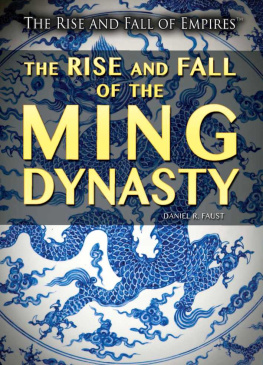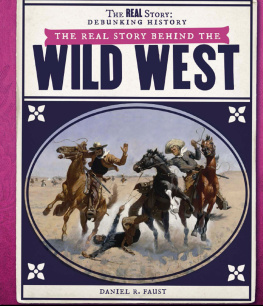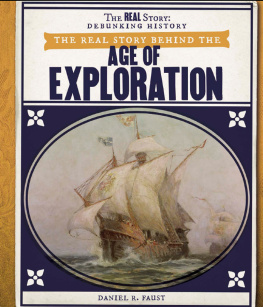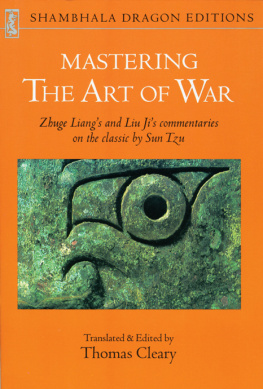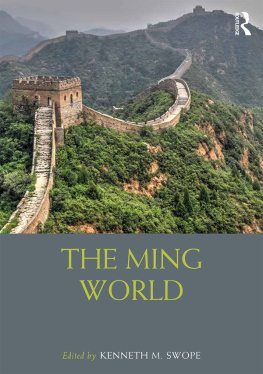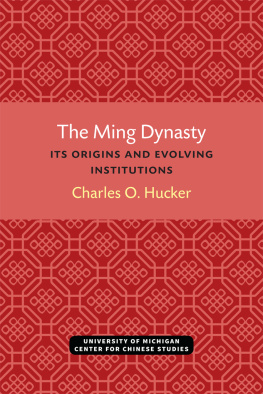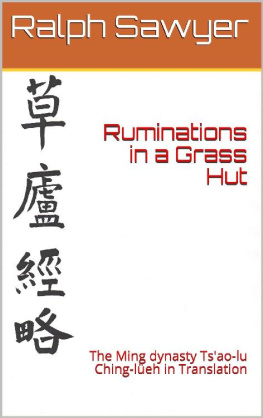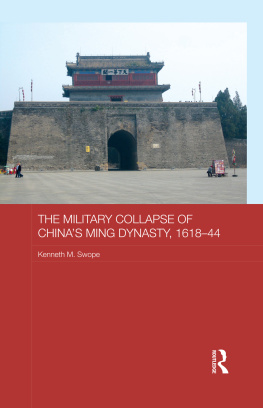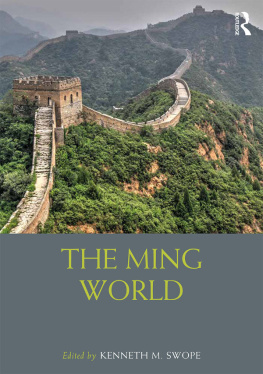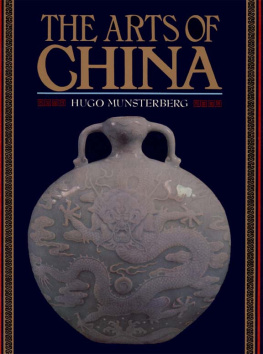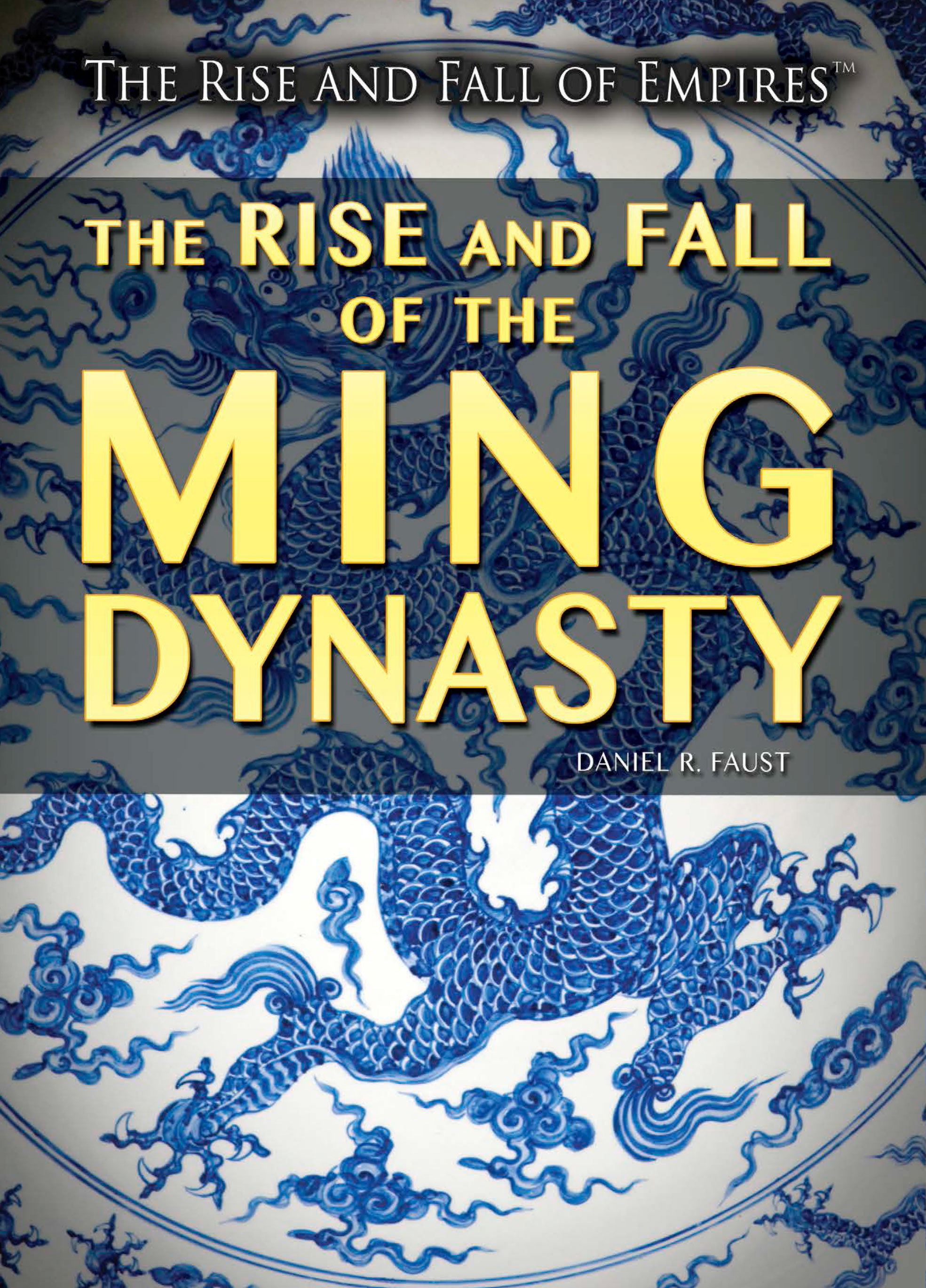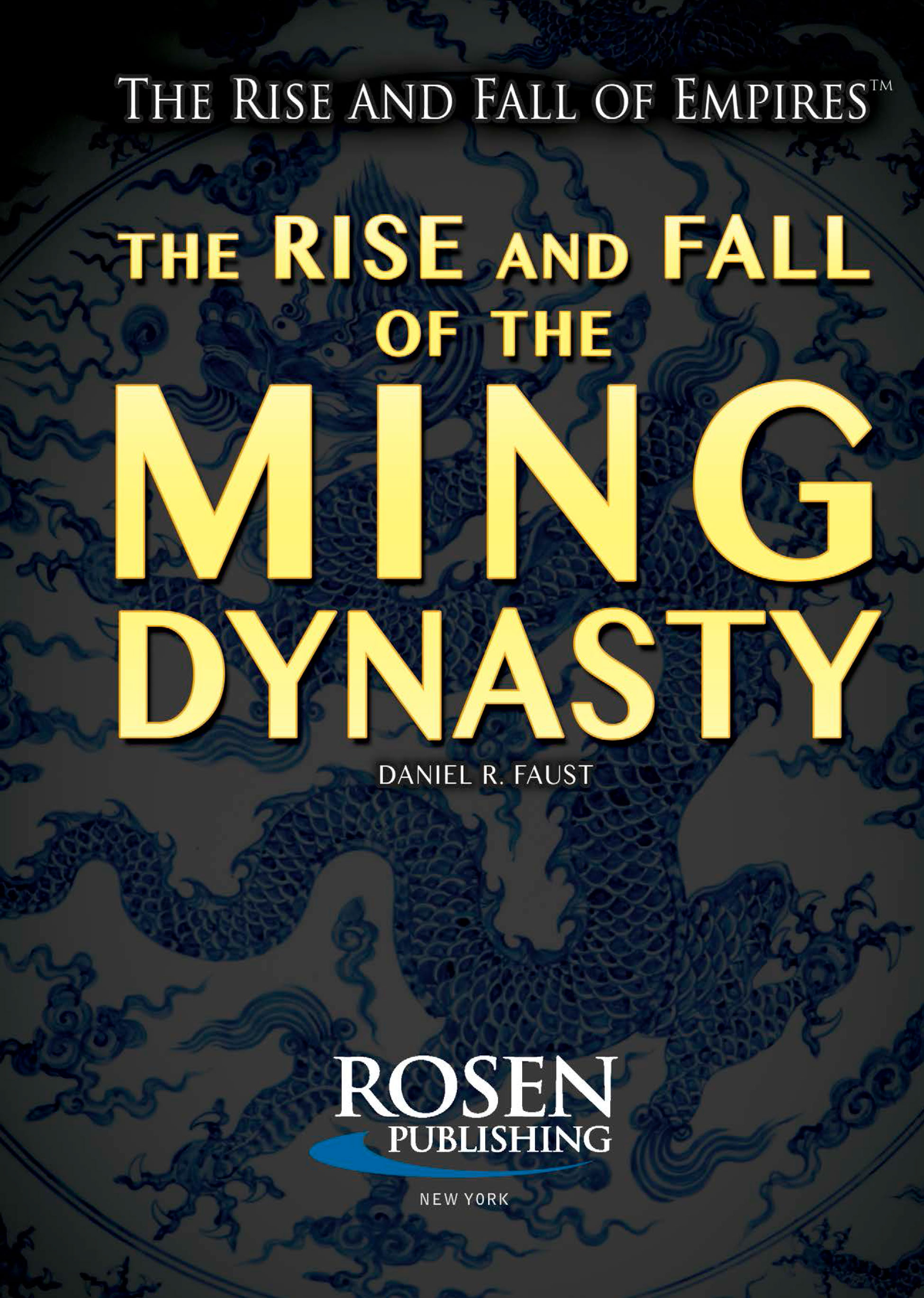- Chapter 1
The Northern Dynasty, the SouthernDynasty, and the Mongol Invasions - Chapter 2
The Restoration of Chinese Rule - Chapter 3
The Growth of Chinas Economy - Chapter 4
Rapid Cultural and ScientificDevelopment - Chapter 5
The Decline and Fall of the Ming
Published in 2017 by The Rosen Publishing Group, Inc.
29 East 21st Street, New York, NY 10010
Copyright 2017 by The Rosen Publishing Group, Inc.
First Edition
All rights reserved. No part of this book may be reproduced in any form without permission in writing from the publisher, except by a reviewer.
Library of Congress Cataloging-in-Publication Data
Names: Faust, Daniel R., author.
Title: The rise and fall of the Ming Dynasty / Daniel R. Faust. Description: First edition. | New York : Rosen Publishing, 2016. | Series: The rise and fall of empires | Includes bibliographical references and index. | Audience: Grade 7 to 12.
Identifiers: LCCN 2015048429| ISBN 9781499463484 (library bound) | ISBN
9781499463460 (pbk.) | ISBN 9781499463477 (6-pack)
Subjects: LCSH: ChinaHistoryMing dynasty, 1368-1644. Classification: LCC DS753 .F38 2016 | DDC 951/.026dc23 LC record available at http://lccn.loc.gov/2015048429
Manufactured in China
CONTENTS
Chapter 1
The Northern Dynasty, the SouthernDynasty, and the Mongol Invasions
Chapter 2
The Restoration of Chinese Rule
Chapter 3
The Growth of Chinas Economy
Chapter 4
Rapid Cultural and ScientificDevelopment
Chapter 5
The Decline and Fall of the Ming
Introduction
M odern China is the fourth largest country in the world by area, and the largest by population, with a vast and diverse landscape that includes deserts, mountains, steppes, and subtropical forests. The people of China are equally diverse, coming from ethnic groups like the Han, the Khitan, the Mongols, and the Manchu. The history of China reflects this diversity. Since around the seventeenth century BCE, China has been ruled by successive dynasties, or lines of rulers from the same family, culture, or ethnic group.
China was ruled by a number of dynasties of varying lengths. Beginning in the early 1200s, China was invaded by the Mongols. By 1279, the Mongol ruler Kublai Khan established the Yuan dynasty. One hundred years later, a peasant uprising would lead to the overthrow of the Yuan and the establishment of the Ming dynasty. The Ming would lead China into another golden age.
Under the Ming, China would see rapid population growth and urbanization, the growth of private industry, improvements in agriculture, and the expansion of foreign trade into the Indian Ocean and East Africa. During this time, a series of older walls and fortresses were connected to form the Great Wall of China. The Ming also moved China's capital from Nanjing to the newly constructed Forbidden City in Beijing. The Ming dynasty had a strong and complex central government, a standing army of over one million soldiers, and the largest navy in the known world.
Known as the Empire of the Great Ming, China under the Ming dynasty stretched from the Great Wall in the north to what is present-day Vietnam in the south.
Despite its many accomplishments, the Ming dynasty would not remain in power forever. In 1618, the Ming dynasty fell to the Qing, or Manchu, dynasty from Manchuria in what is now northeastern China. The Ming dynasty would be the last imperial dynasty ruled by ethnic Han Chinese. Even after its decline, the legacy of the Ming dynasty endures to this day. The period's art, architecture, philosophy, and literature continue to have a cultural impact on China and the rest of the world.
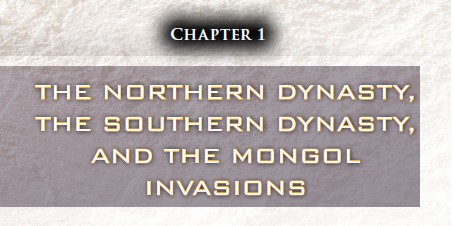
F or much of its history, the Chinese state faced the threat of invasion from the Mongols. The Mongols were nomadic warriors from the steppes, a flat, grassy region that stretched from Asia into central Europe. For several thousand years, the Mongols rode across central Asia, conquering nearby towns and cities. The Mongols were nomadic pastoralists, moving their herds of horses, goats, sheep, camels, and cattle from one grazing spot to another. For centuries, the Mongols battled various groups, including the ancient Greeks, the Romans, the Persians, the Arabs, and the Chinese.
In the thirteenth century, under the leadership of Genghis Khan and his descendants, the Mongols spread out to the south and west, quickly building an empire that would eventually stretch from eastern Europe to Korea. Although the Mongol Empire would soon split into four mini empires, it was the largest land empire to be controlled by a single family of rulers. Moreover, it was the largest to be controlled by nomadic peoples.
MONGOL CONQUEST: KUBLAI KHAN AND THE YUAN DYNASTY
The Mongols were fierce warriors who were feared throughout most of central Asia. This 16th-century Persian illustration shows a Mongol siege of a Chinese fortress.
Beginning in 1207, the Mongols, under their leader Genghis Khan, began a series of invasions into northern China. At that time, China was not one unified country, but a series of smaller empires. Genghis Khan led an initial invasion of Western Xia in northwestern China in 1207. The Mongols withdrew in 1208, only to return one year later. The Mongols' larger campaign into Western Xia in 1209 was more successful. The Mongols conquered several cities along the Yellow River, eventually laying siege to the capital, Yinchuan. In 1210, the Western Xia submitted to the Mongol invaders, becoming vassals of the growing Mongol empire.
After subduing the Western Xia, the Mongols turned their attention to the Jin empire. Between 1211 and 1212, the Mongols led a series of raids into Jin territory in northern China and Manchuria, the homeland of the Jurchen people, the ethnic group that ruled the Jin empire. Beginning in 1214, Genghis Khan led his Mongol troops in an invasion of the Jin empire that would last several years. The Mongols found unexpected allies in their war against the Jin: rebels from the Han Chinese and Khitan people, two other ethnic groups in northern China. By 1234, the Mongols had destroyed both the Jin and the Western Xia, effectively conquering northern China.
Kublai Khan (1215-94) was the fifth Great Khan of the Mongol Empire. He became the first Mongol emperor of China when he founded the Yuan dynasty in 1272.
Although the Mongols ruled northern China, the Song dynasty still held southern China, presenting a continuing threat to Mongol rule. After three decades of war, the Mongols eventually defeated the Song, reuniting China under a single ruler for the first time in centuries. In 1272, Genghis Khan's grandson, Kublai, founded the Yuan dynasty and declared himself emperor of China, which included what would become modern Korea and Tibet. This would be the first time that China was ruled by a foreign dynasty.

